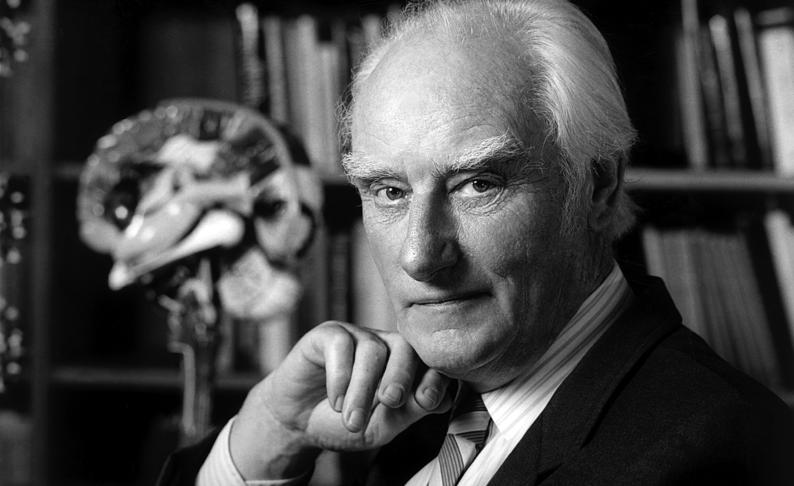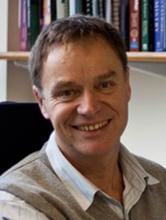On this day in 1916, Francis Crick who was responsible for discovering the double-helix structure of the DNA strand, was born [8 June]. In celebration, Professor Leo Brady from the School of Biochemistry talks about how Crick and Watson’s very first model of the DNA double helix ended up at the University of Bristol.
In the early 1950s there were various theories about the structure of DNA, but none of these fitted the data in a way that seemed plausible. Before computers became powerful enough, the best way to test structural theories was to build physical representations using metal models. Watson and Crick decided to tackle the DNA structure problem in this way and asked the workshop in the Cavendish Laboratory in Cambridge, where they worked, to make those parts that were not already available. They then used the available data, such as the relative proportions of the individual components and data from Rosalind Franklin’s X-ray experiments, to build various structures. The one that made both chemical and biological sense was the now-famous double helix.
‘By a strange twist of fate, this model subsequently spent many years housed within Biochemistry at Bristol.’
By a strange twist of fate, this model subsequently spent many years housed within Biochemistry at Bristol. When the fledgling Department of Biochemistry was established at the University of Bristol, many of its founding members of staff were recruited from Cambridge. This included Dr Herman Watson (no relation to James!) in 1968. When Herman Watson moved to Bristol, understandably he was keen to bring whatever surplus equipment could possibly be ‘spared’ by the Laboratory of Molecular Biology in Cambridge. This included several drawers of no longer used components for molecular models. Included in this mix was Watson and Crick’s now dismantled and abandoned very first model of the DNA double helix.
The model was reassembled and for many years it was discreetly displayed at one end of our undergraduate teaching laboratory. At quiet moments during the long afternoons of practical classes, many of our lecturing staff would proudly show off to our students this hand-built model with its original scribblings on the tin-plate base pairs. But possession is only nine-tenths of the law. As the fundamental importance of Watson and Crick’s seminal discovery became ever more evident, the Science Museum in London launched a hunt for this iconic model. Suffice to say they did manage to extract most of the original model which is now on display in London and viewed by nearly three million visitors annually.
Nonetheless, Bristol somehow held on to two sets of the original tin-plate hand-cut base pairs and these have been incorporated into our own (partial) replica of the very first model of the DNA double helix. To celebrate our 50th anniversary, the model was completely renovated and provided with a new display case in summer 2013. It still sits at the front of our first-year teaching laboratory. Its location here means that this inspiring model can continue to provide our students with a beautiful and unforgettable link to one of the greatest discoveries in biochemistry.
Professor Leo Brady is a structural biologist, interested in understanding biological systems at a molecular level.
This is achieved by primarily using the technique of protein crystallography. A principal focus of our studies is the study and exploitation of proteins central to human disease.




